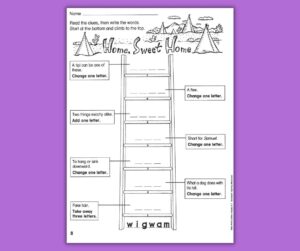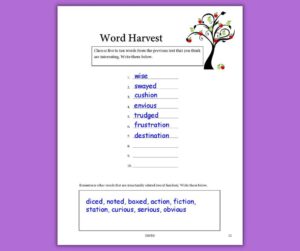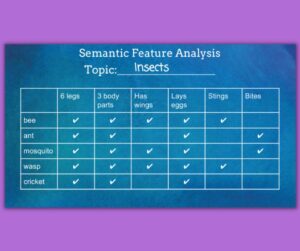Vocabulary: Additional Activities
Research says that vocabulary is least well-learned under the following conditions:
- Mindless repetition and defining of words
- Using words that are too difficult
- Choosing words that have no connection to students’ lives, their studies, their interests, or to other words and concepts they may know.
Students learn 1,000 to 4,000 new words each year! Teaching vocabulary results in:
- Improved reading comprehension
- Improved writing
- Improved word recognition and decoding
- Increased general intelligence.
Here are some other vocabulary activities:
- Word Ladders: Tim Rasinski developed these activities for students of all ages. Students follow the clues to step their way to the top word. The word at the top of the ladder will have some sort of relationship with the starting word. They might be synonyms or antonyms among other possibilities. To do an extension activity, have your students create word ladders. It’s a great way to dig a little deeper into their knowledge of a word.

- Word Harvesting. This activity allows students to:
- Collect or “harvest” 5-10 words in a book they are reading or studying.
- Choose words that they don’t know or can’t explain in their own words.
- Use a word web or vocabulary chart to learn their harvested words.

- Semantic Feature Analysis Chart (insert chart with example). Follow these steps:
- Select a topic
- Provide key vocabulary words and features
- List vocabulary words on the left column of the grid and semantic features across the top row of the grid
- Place a checkmark if the vocabulary word aligns with each feature

Students can also take this information to write a paragraph on the topic that was chosen! You can even create a research project out of it.
